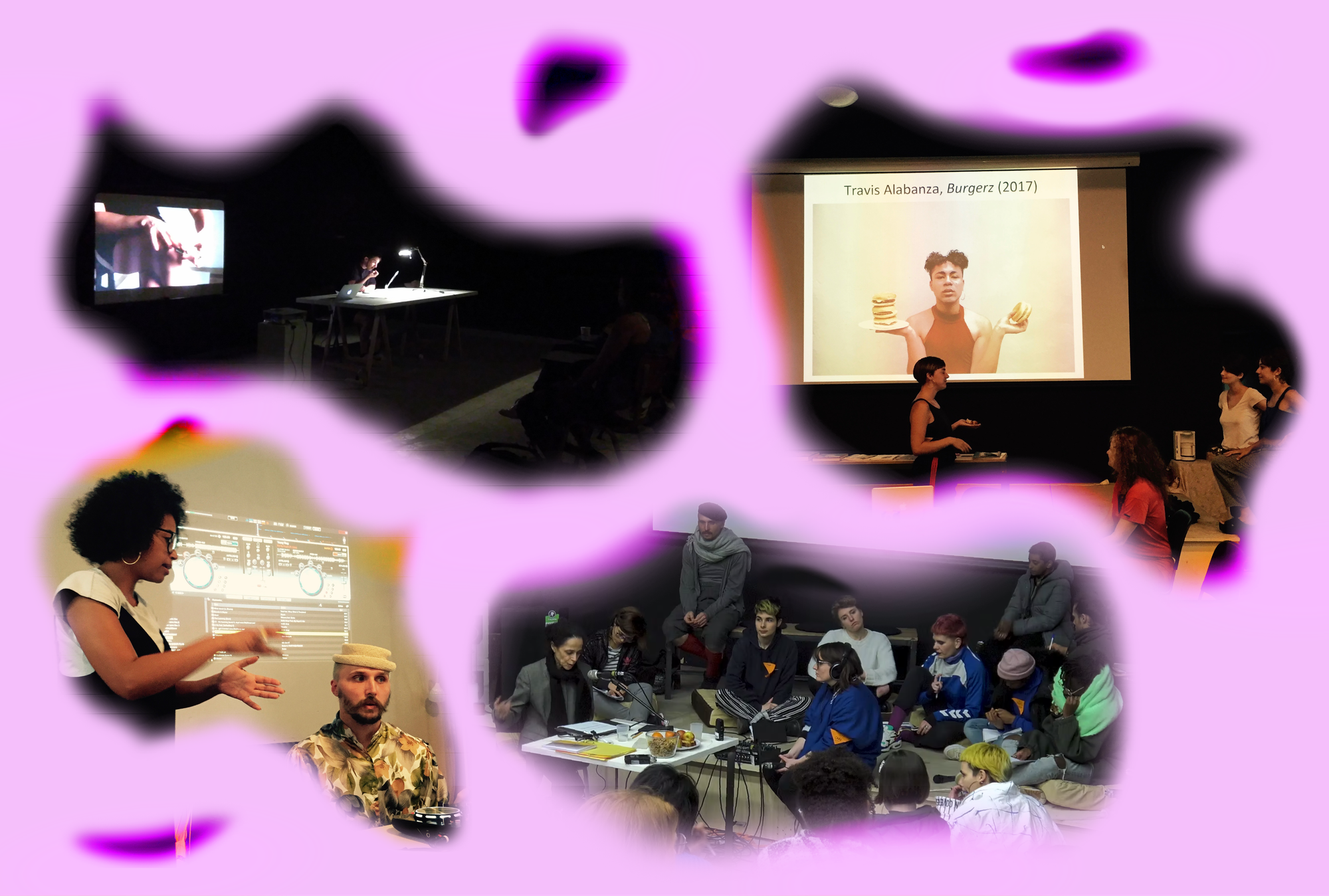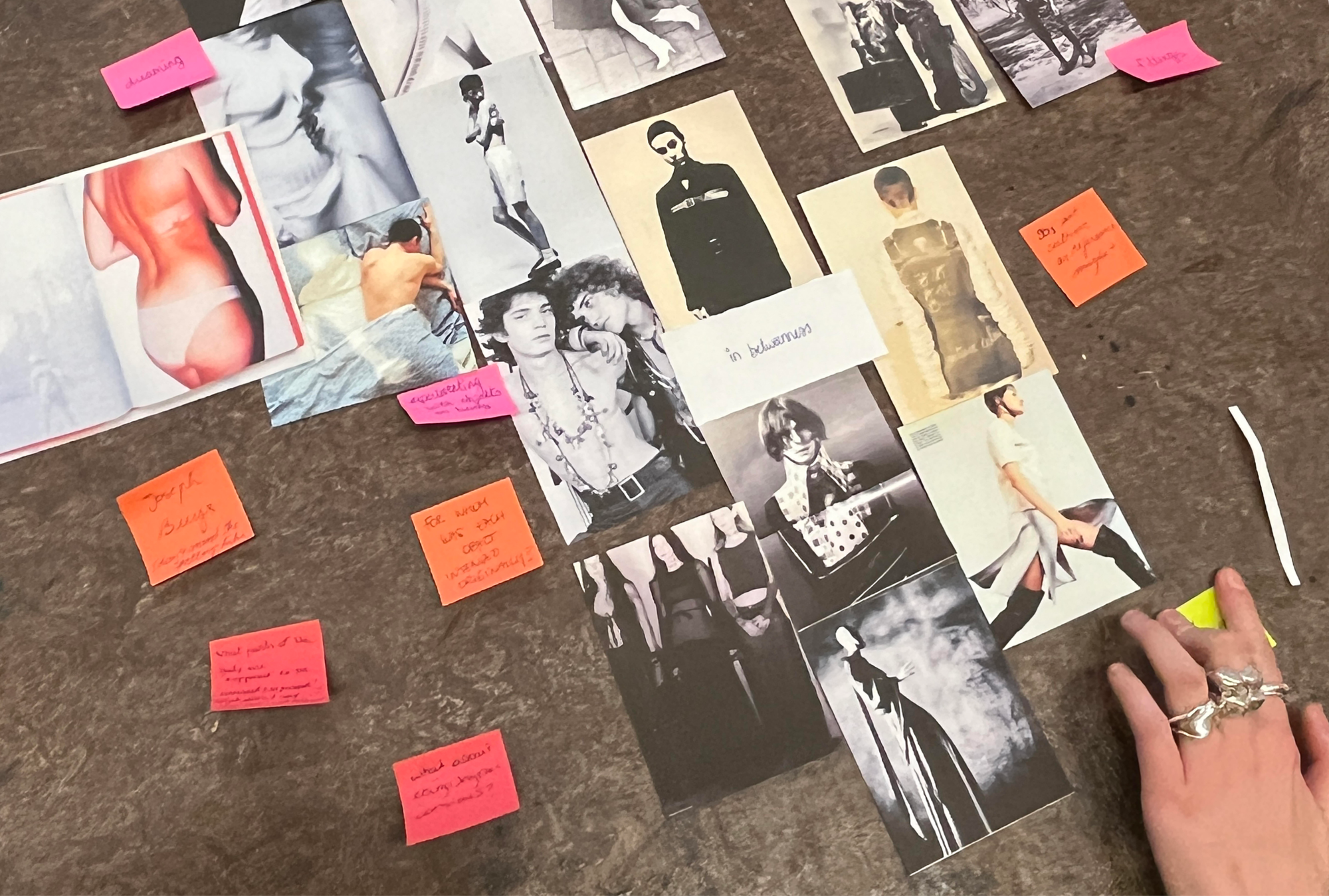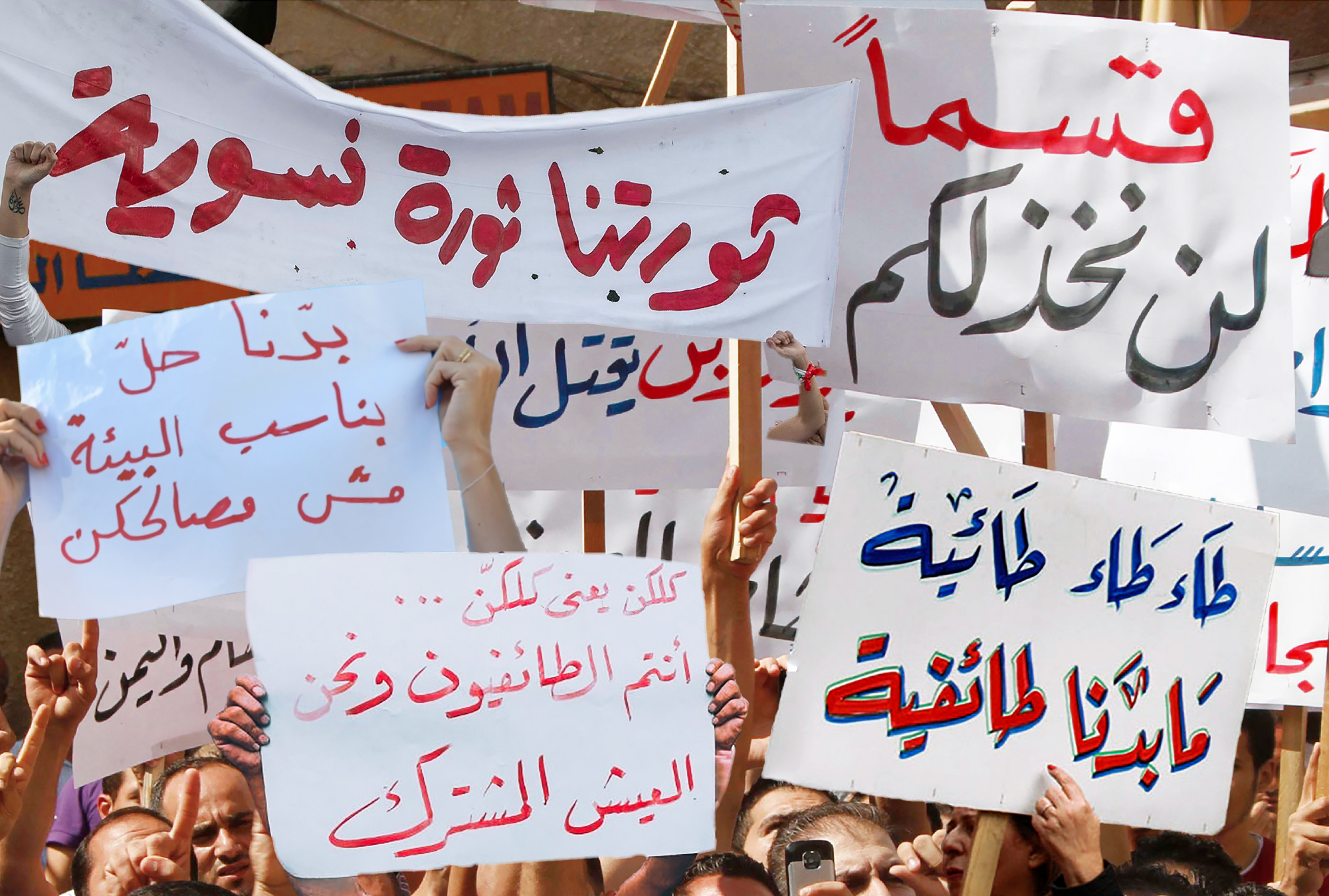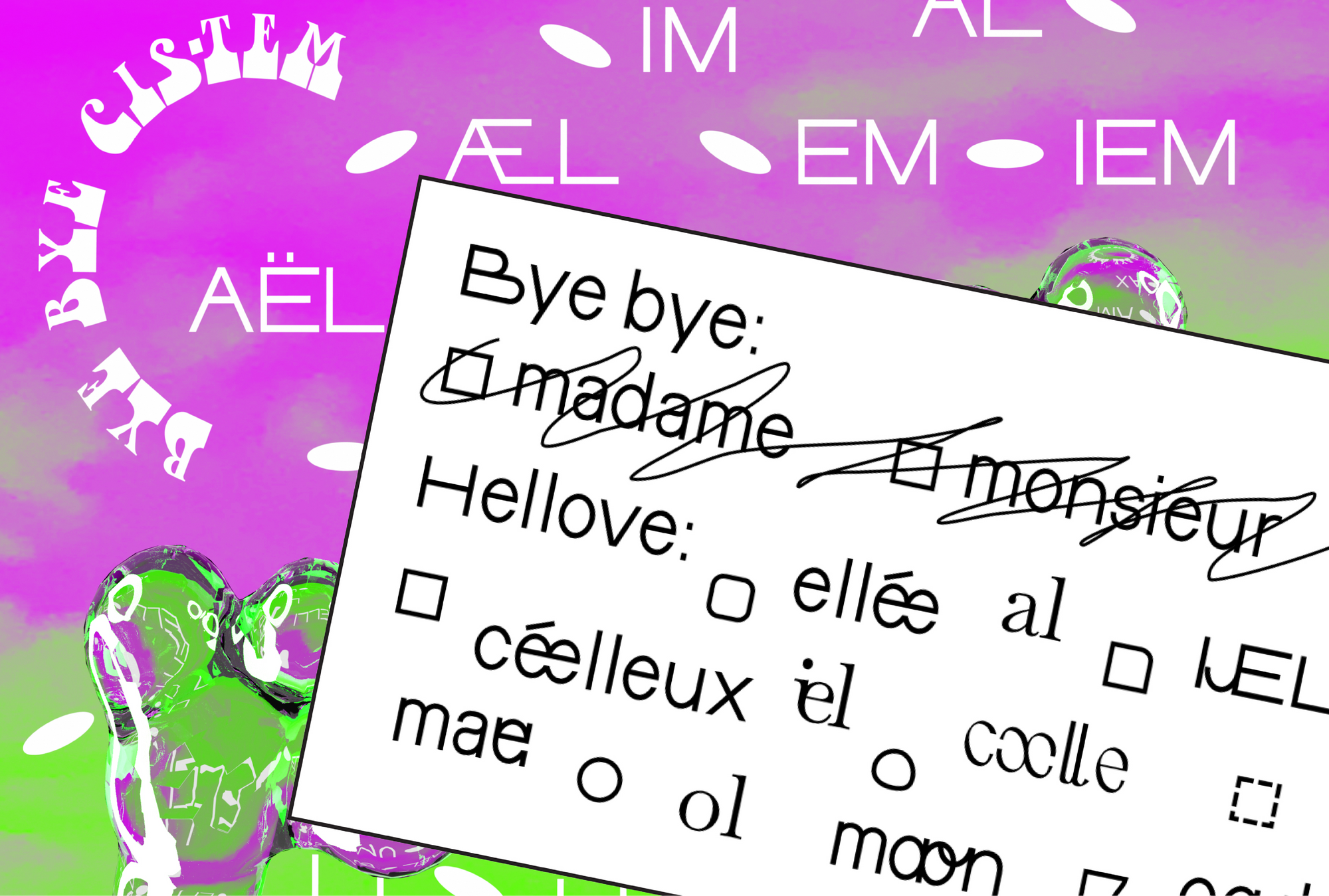
What is your home language? How has it shaped the way you think and see yourself—your identity? Language supports us not only in expressing ourselves, but also in understanding the world around us, in making sense of what has been, what is, and what will be. At the same time, it also limits us in these same ways. It is difficult to describe, and even more difficult to imagine, what we do not have the words for. Occasionally, we need to go on long, meandering journeys to paint a rich landscape of meaning—to echo author Virginia Woolf’s words in A Room Of One’s Own: we have to search for a language that enables us to express ourselves.
Language mirrors society, culture, and intersecting systems of inequalities like classism, white supremacy, and cis-heteropatriarchy. For example, why is the color “white” mainly seen as neutral, or not even as a color in itself? And why is it often associated with cleanliness? Why is the word “slut” generally associated with women who have sexual relations with many men, but not the other way around? Those are just some examples in English. French, German, Arabic, and Hebrew are in different ways—if not even more—gendered languages, as there are often “female” and “male” words. In German, there’s die Bäckerin, the female baker and der Bäcker, the male baker; die Ärztin, the female doctor and der Arzt, the male doctor—and you always have to choose one. Similarly, if you speak about a group of artists, you generally use the plural of the male version if there is even just one man in the group; the female plural is only used if the group consists solely of women. In this way, to a reader of a text, any woman in a mixed group is rendered invisible.
An invitation to get lost
I invite you to leave the straight, well-trodden path of English and many other Indo-European languages. Because, in the words of feminist writer and scholar Sara Ahmed: “Moments of disorientation are vital.” Such moments can offer us the hope of alternative directions. This excursion might help us to get a different perspective on what creating and living within a non-binary language might entail. The text you are reading is written in English. However, I, the author of this text, am not a so-called native English speaker—at least not in the classic British English sense. My home languages are Sesotho and Setswana. I am a Black, lesbian, non-binary person born and raised in Soweto, the southwestern part of Johannesburg, South Africa, where there are eleven official languages. I grew up multilingual, learning Sepedi, Zulu, Xhosa—and yes, also English. In the last few years while living in Berlin, I have also started to find my feet in German.
While some languages across the world operate within a cis-heteronormative system (excluding humans who do not define or categorize themselves as either women or men), in other cultures, people speak languages that are constructed outside of a gender binary. My home language Sesotho is such an example. It is closely linked to Setswana (predominantly spoken in Botswana and northwestern parts of South Africa) and Sepedi (mostly found in the north-eastern regions of the Limpopo province), under the umbrella term “Basotho languages.” Sesotho is not a grammatically gendered language. It does not assign genders to nouns, like the table: la table (in French) and der Tisch (in German), or the sun: le soleil and die Sonne. Sesotho also does not use gender markers like fireman or waitress. In fact, though Western communities in related discourses are pushing for inclusive markers that recognize those whose genders are outside the binary, many Bantu languages have long established themselves as gender sensitive and inclusive.
In Sesotho, we use o as a third person or subject pronoun. Unlike the English language which creates a strict gender binary—“she” or “he”—in Sesotho, the word o is a unifying term referring to both of these (and other) genders, making it inclusive.
O ithutela ho ba eng? – What is she or he studying towards, or to be?
O rata ho bala dibuka tse feng? – Which books does she or he prefer, or like to read?
For the third person in singular and plural (she/he/they) the word ke is used with a noun. For example:
Ke Lebogang. – She or he is Lebogang.
Ke Lerato le Tumelo. – They are Lerato and Tumelo.
The word ke is also a first-person pronoun, meaning “I.” But it also means “she,” “he,” “it is,” or “they” (in plural). It includes all of these, and does not separate them. So, actually, the translation would be:
Ke Lebogang. – She or he is, or I am Lebogang.
Since o, like the word ke, does not necessarily translate to “she” or “he,” it refers to all people of all genders. It has a neutral tone that prioritizes a person and not their gender. It is complex because Sesotho is a tonal language, and these sentences change their meaning based on the tone in which it is said. This means that the first example above can either be speaking about or to a person, as o can translate to “he,” “she,” they,” or “you.”
It’s difficult—and sometimes, even uncomfortable—for me to grasp Sesotho in English. It often feels like forcing a triangle into a circle: since Sesotho and English are very different from each other, it is almost impossible to explain one with the other. O is slightly indefinite unless you become more specific, or you are talking in a context where it is clear whom you are referring to. Translating o—which conflates genders—into a language like English, which has binary gender markers, forces this pronoun to be defined, spelled out, and fitted into this very binary prism. It forces me to think strictly in binary terms, which otherwise I never think in—especially when speaking my language. Another aspect is that it is even difficult to find or trust resources on the language because the foundation was laid by “experts” who studied and explained it (sometimes many decades ago). For the longest time, Sesotho seems to have been studied by non-native speakers who came with a Eurocentric/Western perspective.

Prioritizing the person instead of their gender
In recent years, there has been a strong shift in South Africa of names becoming less gender-specific. My name Lebogang, for example, is non-binary, used for and by people assigned female or male at birth, or who have other genders. In the Basotho and Nguni languages, there are words in singular and plural forms like motswadi/batswadi and umzali/abazali, respectively, which loosely translate to “the birthing person” or “the birthing people”—including women, men, and those who identify as either one or the other. Together with the genderless form of the word o, the language creates a space that allows for defining it based on context and/or people, which is inclusive of people who, like me, are non-binary or might use other genders. Ironically, the language here is more inclusive and embracing than the society or community is—where violence against women, children, and the LGBTQI+ community prevails. Gender-based violence is there, operating outside of the language.
“Language is not innocent.
Language is not neutral.”
However, it is not that easy. Words like mosadi (woman) or monna (man), mme (mother) or ntate (father), ausi (sister) or aubuti (brother) have an importance in Sesotho. Generally, some of these words, depending on their context, are used out of respect to address people. For example, when greeting a man who has children, you would say “father.” Or greeting a young woman or man (who is not a parent) but a little older than you, you would say “sister” or “brother.” These words strongly feel like substitutes where otherwise, words like “she” and “he” do not exist. These words then emphasize gender differences but more importantly, roles placed on certain bodies, creating a relationship between language and gender. At times, they directly show how gender inequalities get perpetuated in languages. But they also directly demonstrate that language is not innocent. Language is not neutral.
Language shaped by history and systems of inequality
In Sesotho, the term nyopa (a very insulting word used both formally and informally) refers to a “desolate” woman, upholding detrimental judgments about her worth linked to her reproductive capabilities. But there is no term for “desolate” men. Perhaps this is rooted in cultures that have always blamed women when a couple was not able to conceive a baby. To give an example from another language: isiZulu, the most used Nguni language in South Africa, uses words or phrases that not only perpetuate stereotypes and create gender inequalities but also breed sexist attitudes. The word isoka in isiZulu is a term used for a man with multiple sexual partners. It has a mild celebratory meaning that places men in innocence. But a similar term describing a woman, isifebe, carries a different, derogatory meaning. While isoka has a positive connotation, isifebe translates to “slut.”
Even when using o, focusing on societal roles still boxes people into a defined gender. So, when is a language fully non-binary? Sesotho is non-binary because of the use of o, but at the same time, it is not, because of the gendered roles assigned to people. Or is this maybe again the reflection of colonial ideas? Can a language be non-binary despite having these kinds of gender markers? Is it maybe even desirable to have the language tools to make gender and binaries visible, in order to talk about them and at some point, also overcome them?
“Much can be learned from less well-known, but gender-non-binary languages like Sesotho.”
It would be ideal to have a language with which everyone, no matter their gender, can fully express themselves and also be represented and addressed respectfully. A language that for example uses an epicene pronoun like o. Much can be learned from less well-known, but gender-non-binary languages like Sesotho. They could inspire and contribute to the discourse around finding ways to make languages more inclusive. However, all of this is very complex. There is no simple, straightforward way to solve these issues. Rather, it seems we need interference from all sides and angles, all at the same time. Some experiments and ideas for change could be inspired by languages that, despite their own issues, are less gendered than languages like English, German, or French.
Bye Bye Binary: Using design to overcome binary language
Systems like cis-heteropatriarchy are so intertwined with our thinking that it is hard to grasp or describe them, far less unravel our language from them. How can we describe something and speak about something that we have no words for? We have to find or create our own ways. Like feminist author Audre Lorde said: “The master’s tools will never dismantle the master’s house.”
We still need a language that supports us in expressing our differences and deconstructing those systems of inequalities in order to be able to understand and point them out—and then overcome them. This is the tension in which many feminists, but also anti-racist activists work. We wish for a world in which skin colors and genders do not matter anymore, but right now we need to be able to see and acknowledge and talk about them, in order to overcome the hierarchies that cis-heteropatriarchy and white supremacy create, and to dismantle these systems themselves.
There are many attempts to show and change bias in languages. French, for example, is a language that has been historically shaped by heteropatriarchy, and institutionally preserved through the Académie française, the French council for matters pertaining to the French language. It operates in a binary that prioritizes masculine forms over feminine forms, therefore outweighing and marginalizing them.
“A neutral language would render invisible the differences and injustices that we need to see.”
While activists are coming up with many different hacks, and linguists are working on changing the grammatical rules, designers have different tools they can work with, most importantly the power of creativity. In the beginning of 2023 in France, the Contemporary Art Center CAC Brétigny featured the works of the Franco-Belgian collective Bye Bye Binary, which uses typography and graphic design to explore and propose how the French language can move towards more justice.
Bye Bye Binary does not believe in or even aim for a gender-neutral language, but for an inclusive, non-binary, or post-binary language. A neutral language would render invisible the differences and injustices that we need to see. The collective focuses on demasculinizing typography and on creating inclusive and non-binary ways of writing and speaking the French language. They highlight design justice in their pedagogy, and practice through addressing inequalities in typography, graphic design, and society in general. In doing so, they explore ways to reverse stigmas and overturn power dynamics.
They deconstruct the established norms by making women and other people outside the binary visible in the language and history of typography. Therefore, they also challenge what makes “good” design. Principles like “less is more” are still dominating design education and general discussions on what makes good design. The problem is that such principles are in reality neither objective nor universally applicable—even if the established canon claims the opposite. They exclude and even stigmatize colorful, rich, decorative graphic design and typographies often originating from womxn and/or BIPoCs.
In their show at CAC Brétigny in France, the collective addressed injustices like violence, insults, and demeaning lexicon/word-calling against, Black, PoC, women, and queer people. With colorful flags, the collective embraced queerness and used inclusive and non-binary typography as manifestations of their anger. One of the posters titled “Abortion is queer as fuck” addressed the stigmas around abortion, reclaiming the narrative and moving away from prevailing ideas of abortion as a sin. Central to their work is the creation of ligatures (two or more graphemes that connect to form one glyph). They intentionally move away from separating the male and female forms, to close the gap between them and to transition towards an inclusive and non-binary typography. In their work, the collective is also meandering here and there. Not following a straight path, they question, deconstruct, and non-binarize the norms and standards of the French language, and also the rules of graphic design and typography. They question those rules, bend them, and even invent new possibilities. They create new imaginaries and fantasies—not just one vision, but many different ones. They create a beautiful mess.
Often people and institutions such as the Académie française argue that challenging grammatically gendered language in these ways makes it incomprehensible, decreases readability, excludes people with reading or seeing impediments, or even endangers society. However, this is not as dangerous as excluding or rendering everyone who is not a straight cis-man invisible.
Typography and design are not neutral
Just like society and language, the design discipline has been reproducing systems of inequality like cis-heteropatriarchy, classism, and white supremacy. In their text Design and Intersectionality: Material Production of Gender, Race, Class—and Beyond design researchers like Ece Canli and Luiza Prado de O Martins point out how artifacts, spaces, and technologies which we all interact with daily in society manifest these inequalities. As an example, they point to “the everyday gendered goods that underpin the representation of heteronormativity and performativity of feminine/masculine and female/male dichotomies” or “the gender-segregated public bathrooms that enforce binary perceptions of gender and silence queer and trans identities.”
“Privilege and oppression are distributed and manifest themselves through designed artifacts such as clothes, furniture pieces, digital interactions, or typography.”
Design researcher Sasha Costanza-Chock also describes design as a discipline which is knotted and tied up in these dynamics of inequality. Referring to feminist scholar Patricia Hill Collin’s “matrix of domination,” Costanza-Chock explains how design contributes to the inclusion or exclusion of people based on their intersecting gender, sexuality, race, class, and dis/abilities—just to name a few. Privilege and oppression are distributed and manifest themselves through designed artifacts such as clothes, furniture pieces, digital interactions, or typography.
In their paper Imaginaires typographiques inclusifs, queers et non binaires, Bye Bye Binary critically interrogates this, showing John Baskerville’s work as a “classic example of the invisibilization of women in the history of typography”: Baskerville’s companion and associate Sarah Eaves, who contributed significantly to the print shop, is not given credit for her work in developing typefaces and prints.
Bye Bye Binary uses typography as a tool for liberation. They blend the lines between typography, illustration, and graphic design. Using many colors and layers, they play with a variety of elements, and create together. They refuse to follow or even reproduce a canon. By opening up many alternative paths, they offer a multitude of possibilities by taking up space, thereby creating tools for the means and aims of their communities so that we can express ourselves and imagine a better future where language is inclusive and non-binary or even post-binary.
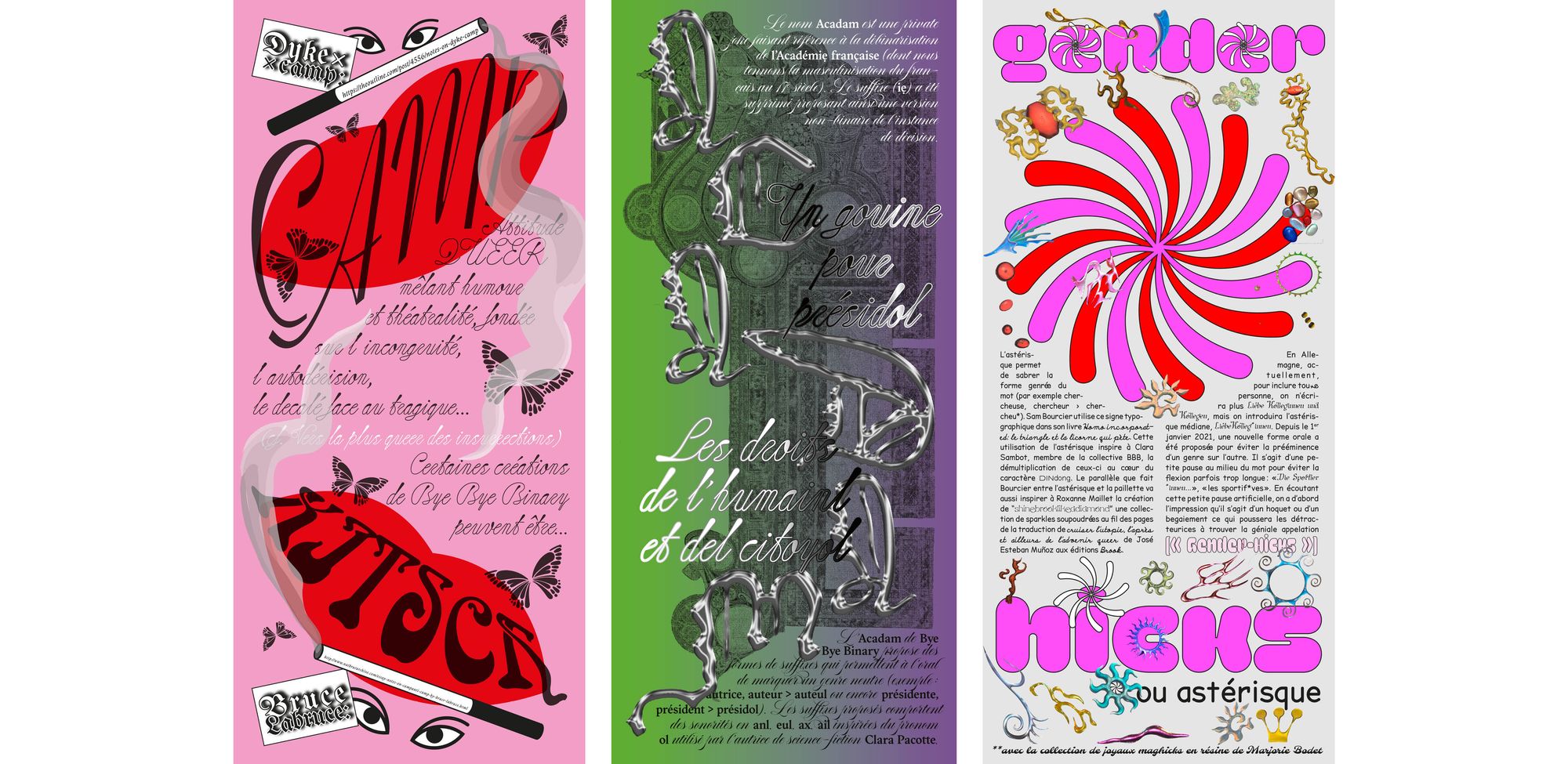
Whether we take inspiration from other languages or experiment with typography, there is an urgent need to question the status quo, the norms, and the supposedly neutral to open up possibilities for alternative, better futures in which we can all see ourselves supported by and represented in and through languages we speak. The de- and reconstruction of language is not just the role of linguists, activists, or designers—it is a collective societal effort.
This text is an edited version of an article originally commissioned by CAC Brétigny for its online “Revue” for the exhibition Læ collectiv·f·e by Bye Bye Binary.
Lebogang Mokoena (they/them) is a South African independent journalist and researcher. Lebogang is a German Chancellor fellow in the 2022-2023 cohort funded and supported by the Alexander von Humboldt foundation. As part of this fellowship, they are hosted at the University of Potsdam, Germany. Lebogang’s research work focuses on climate change news images and the politics of representation. From a decolonial and intersectional perspective, their research focuses particularly on how the news media both in South Africa and Germany frame the representation of human beings in climate change news images during the 2021 German and 2022 South African floods.
Title image collage:
Front: Calling Cards by Bye Bye Binary (Loraine Furter) with BBB Baskervvol (BBB/ANRT), Combine (Julie Patard) & DINdong (Clara Sambot).
Background: flag Bye Bye Cis-tem by Bye Bye Binary (Léna Salabert-Triby, Clara Sambot, Camille Circlude)
Both exhibited as part of the collective show “Subversif·ves, graphisme, genre et pouvoir” at MUDAC, Lausanne, Suisse, 2021.


